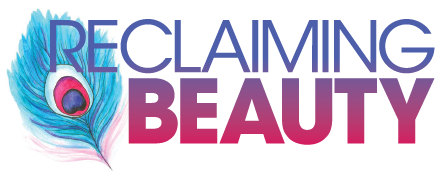The Healing Power of Developmental Movements: Exploring Push, Reach, Grasp, Pull and Yield
Developmental movements of the Relational Cycle as articulated by Bonnie Bainridge Cohen
Our bodies possess a remarkable ability to heal themselves, given the right tools and conditions. In the world of somatic therapy, there has been growing interest in understanding the role of developmental movements in supporting our healing process. These fundamental movements such as push, reach, grasp, pull, and yield, are not only crucial for our physical development as infants but also play a significant role in our overall well-being as adults. These developmental movements work together to create a relational cycle that starts and ends with yield. The dynamics between these movements constitute an important map of the Embodied Recovery for Eating Disorders approach. In this blog post, we will delve into the connection between these developmental movements and their impact on our healing journey.
Describing the Developmental Movements
Push
The push movement, observed as early as when infants learn to lift their heads and push up with their arms, is a vital element of our healing process. Pushing allows us to move towards the developmental task of embodiment. The action of push engages our three near senses of interoception - the ability to track our internal sensations, proprioception - the ability to sense where we start and stop in space, and vestibular - balance and our orientation to gravity. Push allows us to feel our edges and sense where our bodies end and the world begins. Push also allows us to clarify our boundaries which serve to protect, contain and filter. In the context of healing, push brings us into curious dialogue with our embodiment which lays the foundation for healing.
Reach
The reach movement symbolizes expansion, growth, and the willingness to explore new horizons. Just as infants reach out to grasp objects, we must extend ourselves to seek new solutions, perspectives, and possibilities for healing. Reach also allows us to move towards connection and support. By embracing a mindset of curiosity and openness, we can discover body-centered therapies, somatic resources, or supportive communities that enrich our healing journey.
Grasp
The grasp movement signifies our ability to hold onto what serves us and release what no longer serves us. Infants instinctively grasp objects to explore their surroundings. Similarly, in our healing process, it is essential to recognize what supports our well-being and to let go of harmful habits or unhealthy relationships. Developing discernment and holding onto beneficial changes, connections and nourishment will create a solid foundation for sustainable healing.
Pull
The pull movement represents the force that brings what nourishes our mind, body, and soul into ourselves. As infants pull themselves up to stand or take their first steps, we, too, must find sources of inspiration and steady support that allows us to pull these experiences into us for our nourishment. Surrounding ourselves with a supportive network, engaging in activities that bring us joy, and seeking professional guidance when needed can help us harness the power of the pull movement on our healing journey.
Yield
The yield movement emphasizes the importance of surrender and letting go. In infancy, yielding is observed when infants relax their bodies and allow themselves to be carried or supported. In the healing process, yielding involves acknowledging the need for rest, self-care, and self-compassion. By giving ourselves permission to slow down, recharge, and heal, we honor our innate capacity for self-restoration.
What Interrupts Developmental Movements
Developmental movements can be interrupted due to attachment dynamics, sensory processing challenges or trauma. When we can complete these movements within the context of our attachment systems (caregivers, family, work, community, cultural, societal, and spiritual frameworks), we are able to effectively use them in defense as well to stand our ground, set boundaries, move away from things that are not to our liking, and protect ourselves from harm. Movement impulses can be interrupted in defense and in attachment, and the unsuccessful completion of these movements will shape how we go about having our needs met in the world.
In Body-Centered Psychotherapy and Embodiment Coaching, we bring these movements into sessions as experiential opportunities to bring curiosity to how we are organized in relationship to these movements and how they impact our recovery and healing process. This process increases our embodiment, and we believe embodiment heals.
Understanding and integrating the developmental movements of push, reach, grasp, pull, and yield can greatly support our healing process. By embracing these movements as metaphors for personal growth and resilience, we can tap into our innate capacity to heal and thrive. As we navigate our healing journey, let us remember that the road to well-being often involves pushing into our embodiment, reaching out for support, grasping onto nourishment, pulling nourishing experiences into ourselves, and yielding to rest and integration. May these movements guide us towards a more vibrant and fulfilling life.
Are you curious how exploring these developmental movements can support your recovery and healing journey?
If you live anywhere in North Carolina or South Carolina and would like to start weight-inclusive body-centered psychotherapy for your eating disorder recovery and body image healing journey, our experienced and effective therapists can help. Our therapists are able to see clients living anywhere in North Carolina or South Carolina. We offer everything from eating disorder therapy, trauma therapy, nervous system therapy, Safe and Sound Protocol, Safe and Sound Protocol Groups, embodiment coaching & more. We treat all genders, teenagers, and adults all the way across the lifespan. Our therapists each have their own specialized training in somatic approaches to eating disorders and unique personalities. It’s important we get you matched up with the right therapist. The first step is to reach out out online or give us a call at 828-279-7091.
Contact us to make an appointment today!






